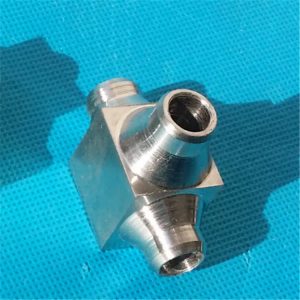What are the commonly used fire pipe fittings
Classification of fire pipe fittings:
1. Butt welding tee: It is a tee fitting that is welded after butt joint with the connecting fitting.

2. Socket type tee: It is a tee pipe fitting that is welded or welded after the connecting pipe fittings are inserted into each end of the tee.
3. Card sleeve type tee: that is, the three-way pipe fittings that each end is a card sleeve joint, and the pipe fittings are inserted and then tightened.
4. Threaded tee: a tee fitting that connects the fittings in a threaded manner.
According to the use can be divided into:
1. Drainage and fire-fighting pipe fittings: common drainage cast iron socket pipe and pipe fittings. Flexible anti-seismic interface drainage cast iron straight pipe, this type of cast iron pipe is sealed with rubber rings and fastened with bolts, and has excellent flexibility and elasticity under internal water pressure. It can adapt to large axial displacement and lateral deflection deformation, suitable for indoor drainage pipes of high-rise buildings, and is very suitable for ground-moving areas.
2. Cast iron pipe for water supply: mildly high, thin wall, pressure resistance, impact resistance, corrosion resistance, shock resistance and other properties. The pipe interface adopts a flexible interface, and also has a certain elongation rate and deflection angle. It has the advantages of pig iron pipe and steel pipe material, avoids the shortcomings of iron and steel, and the water supply cast iron pipe bears high pressure, which is suitable for the transportation of pressure fluids such as water and gas.
3. Sand-type centrifugal fire-fighting straight pipe: The raw material of the sand-type centrifugal cast iron straight pipe is gray cast iron, which is suitable for the transportation of pressure fluids such as water and gas.
4. Continuous fire-fighting straight pipe: Continuous fire-fighting straight pipe is a continuous fire-fighting gray fire-fighting pipe, which is suitable for the transportation of pressure fluids such as water and gas.
Working temperature and use effect of fire pipe fittings:
When installing fire-fighting pipe fittings, it is necessary to refer to some standard parameters of pipes and fittings, such as the relationship between the test pressure and nominal pressure of grooved pipe fittings for pipe installation, the working temperature of pipe fittings and the use effect, etc. These factors are in This needs to be considered before piping is installed. After referring to such factors, choosing the grooved pipe fittings to be installed here will greatly improve the model and installation effect.
The nominal pressure of the pipe fittings refers to the compressive strength at the reference temperature, but in many cases the pipe fittings do not work at the reference temperature. As the temperature changes, the compressive strength of the pipe fittings also changes, so the products with the same nominal pressure value are At different temperatures, the working pressure is also different. For example, the relationship between the nominal pressure and the working pressure of high-quality carbon steel pipe fittings in different ranges is shown in the table below, and the maximum working pressure of other pipe fittings of various materials at different temperatures.